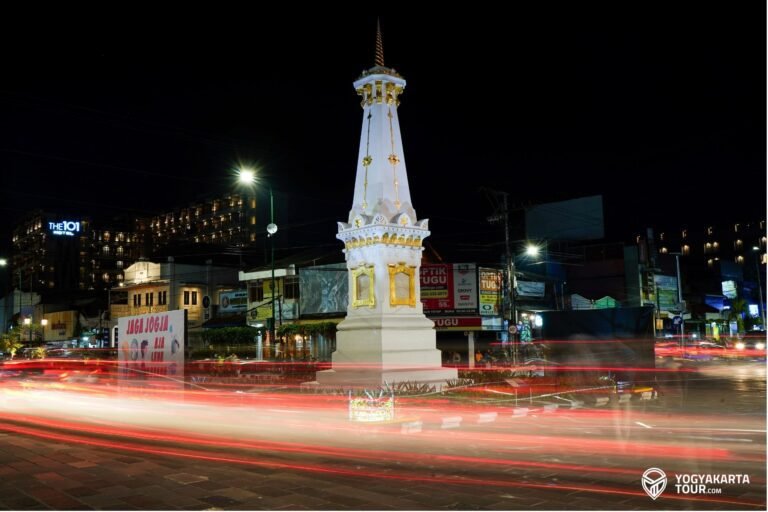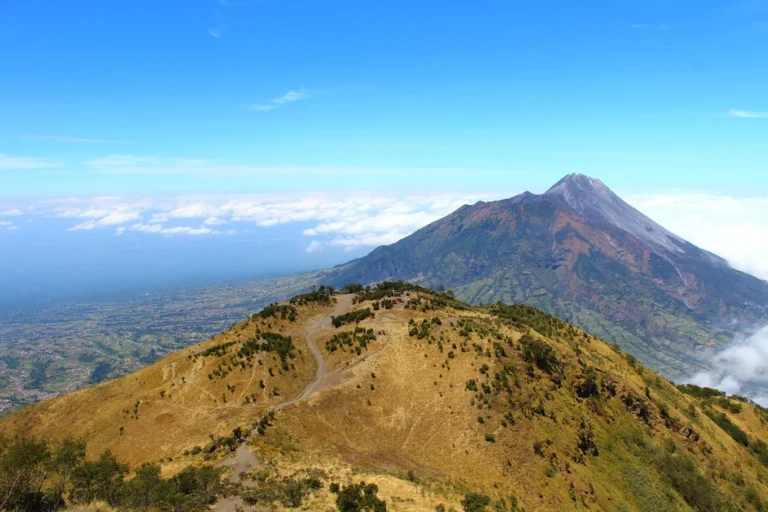Dieng Plateau is a captivating destination nestled atop the volcanic landscapes of Central Java. This place is really suitable for those who love with natural tourism spots instead of Borobudur Temple in Central Java. It offers an enchanting escape into misty hills, ancient temples, and unique local culture. Its cool climate, dramatic vistas, and rich heritage make Dieng a must-visit destination for adventure seekers, history enthusiasts, and culinary explorers alike.
Getting There: Routes and Recommendations
How to go to Dieng Plateau starts with a scenic drive along Java’s winding mountain roads. From Semarang, travelers usually drive southwest along the Semarang–Solo toll road, exiting at Salatiga, then passing through Magelang before climbing the Wonosobo–Kalianget route.
This 300-kilometer trip takes about six to eight hours by private car, depending on traffic. Public transport options include daily buses and shuttles from Semarang’s Terboyo Bus Terminal to Wonosobo or Banjarnegara, followed by local minibuses (“angkutan desa”) to the plateau.
Visitors from Yogyakarta can depart Giwangan Bus Terminal for a seven to nine-hour bus ride to Wonosobo, then transfer to a local shuttle for the final ascent. An alternative is the train to Purwokerto, followed by a six-hour road trip on shuttle services.
Discovering Ancient Ruins: The Arjuna Temple Complex
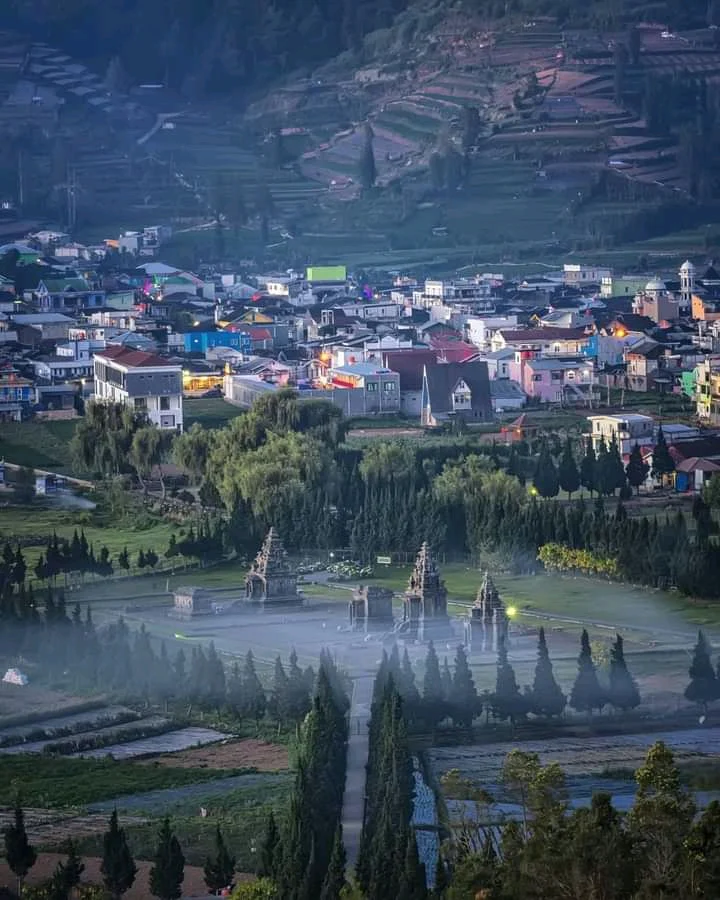
The cultural charm of Dieng Plateau is best represented by its crown jewel, the Arjuna Temple complex. It’s a group of eighth-century Hindu shrines carved from andesite stone. Four primary temples stand in a row against rolling green slopes, their intricate bas-reliefs hinting at a sophisticated Javanese civilization.
Arjuna Temple Complex best visited at dawn when mist weaves between temple spires. The site offers both spiritual resonance and photographic splendor. Modest entrance fees support ongoing preservation, and visitors are asked to dress respectfully, covering shoulders and knees.
Sunrise Spectacle: Hiking Bukit Sikunir
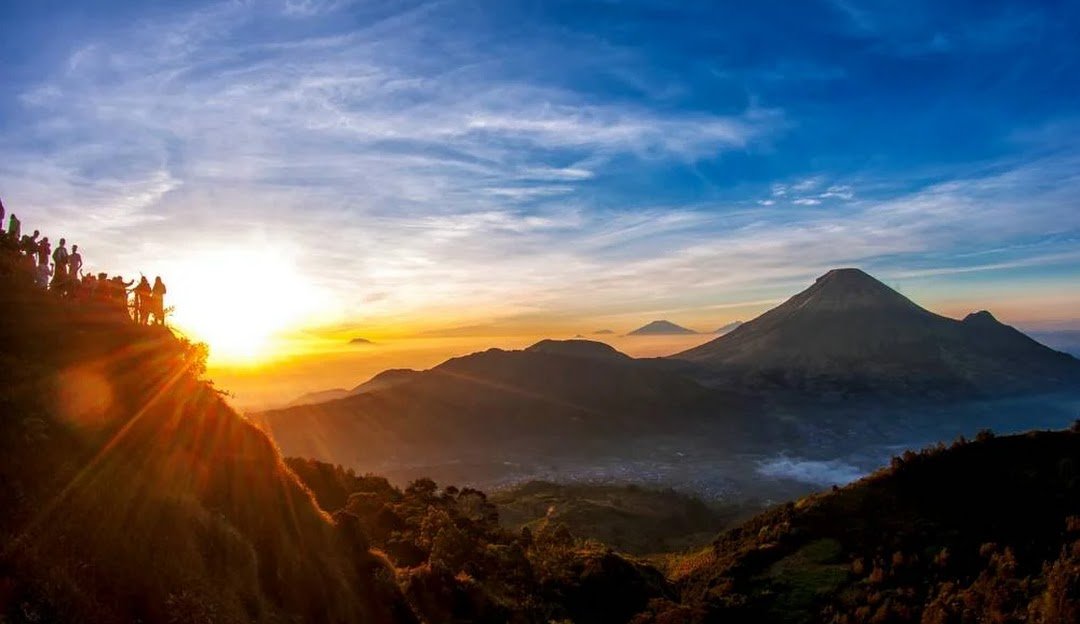
Renowned as the most famous Dieng Plateau sunrise viewpoint, Bukit Sikunir offers travelers an unforgettable sight of a cloud-covered horizon at dawn. Wake up at 3:30 AM and make your way to Bukit Sikunir, roughly five kilometers from the temple complex. A stone-laid trail of roughly 400 steps leads to the summit at 2,332 meters.
In dry season months (June to September), clear skies reveal distant volcanic peaks. The shoulder seasons may offer denser cloud cover and more dramatic light. Local guides and porters can be found at the start of the trail, offering their services for a small charge, while bundled groups typically share blankets to fight off the cold of the early morning.
Colorful Lakes: Telaga Warna and Telaga Pengilon

Dieng’s volcanic activity manifests in two stunning lakes, Telaga Warna (“Colorful Lake”) and its neighbor, Telaga Pengilon. Minerals and sulfur in hot spring outflows create a shifting palette of emerald, turquoise, and indigo on Telaga Warna’s surface. While Telaga Pengilon’s crystal-clear waters reveal fish darting beneath lily pads.
Wooden boardwalks trace each shoreline, with informational plaques explaining the lakes’ geology. Mid-morning visits often coincide with the brightest hues, while late afternoon light softens reflections.
Geothermal Wonders: Sikidang Crater and Beyond’
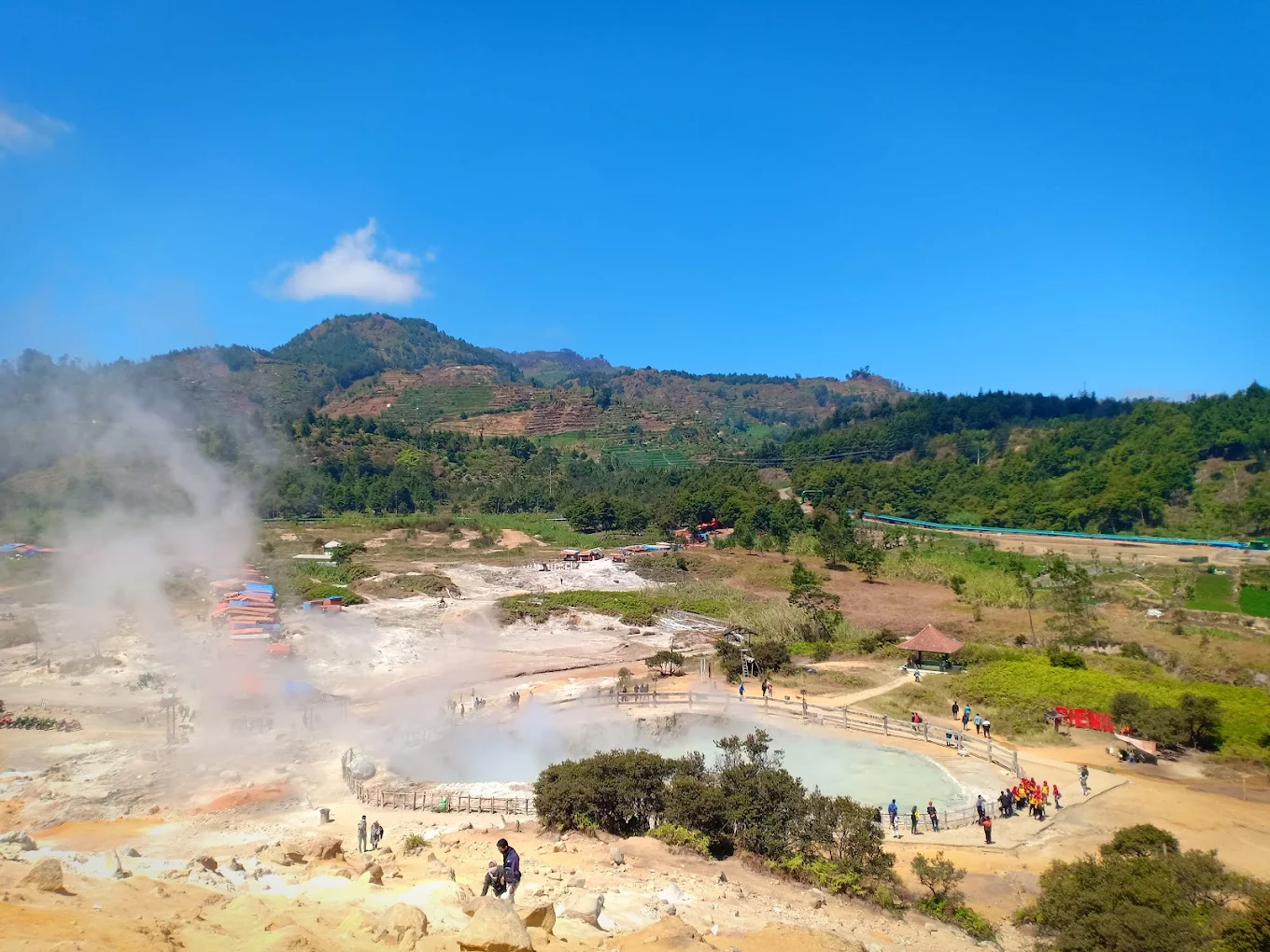
A short drive from the lakes leads to Sikidang Crater, an active geothermal site where bubbling mud pools and fumaroles hiss with volcanic energy. Yellow sulfur deposits rim the steaming vents, and a sturdy boardwalk keeps visitors at a safe distance.
Guides may also take you to lesser-known vents and hot springs in the vicinity, including the Sembungan hot spring, where locals bathe in naturally heated pools surrounded by pine forests.
Our Tour Package
Quiet Panorama: Bukit Sidengkeng
A lesser-known vantage point, Bukit Sidengkeng affords unobstructed views of terraced farms, distant mountains, and the Dieng volcanic complex. The hike is shorter and less crowded than Sikunir, making it suitable for travelers seeking solitude at sunrise or sunset.
Cultural and Geological Insights: Dieng Plateau Theater
The Dieng Plateau Theater serves as an interactive visitor hub, showcasing short films about the area’s volcanic past, farming culture, and ancient heritage. Comfortable seating and multilingual presentations make this a recommended first stop, providing context and orientation before venturing into the plateau’s natural and archaeological sites.
Local Flavors: Culinary Delights of the Highlands
Dieng Plateau’s cool, fertile soils yield distinctive produce and dishes. Carica fruit, distinct yet similar to papaya, is typically enjoyed preserved in syrup or made into sour pickles. Mie Ongklok, a hearty noodle soup tossed with cabbage, mustard greens, and savory broth, warms hikers after chilly treks.
Crispy Tempe Mendoan fritters, served with a fiery sambal, showcase the region’s soy-based snack traditions. Small warungs (food stalls) near major attractions offer these delicacies at very affordable prices, making them one of the must-try food in Dieng Plateau for visitors seeking authentic local flavors.
Who Should Visit Dieng Plateau
Nature enthusiasts will relish the plateau’s verdant hills and panoramic viewpoints, while history buffs will find the Arjuna temples and scattered archaeological remnants deeply engaging. Photographers, armed with wide-angle lenses, can capture mist-shrouded mornings and kaleidoscopic lake reflections.
Adventure travelers comfortable with moderate hikes will appreciate sunrise treks and crater explorations, and culinary explorers will delight in sampling endemic fruits and traditional street foods.
Families with young children should prepare for sudden temperature drops and consider shorter day trips, while visitors with respiratory sensitivities ought to maintain distance from active fumaroles.
Practical Tips and Tricks
Dieng Plateau’s high elevation means temperatures can dip below 10 °C, especially before sunrise. To stay comfortable, it’s important to dress in layers that include a thermal base, a fleece, and windproof jacket.
Cash is king on the plateau, as ATMs are scarce, so bring sufficient Indonesian Rupiah for entrance fees (around IDR 15,000 per site), food, and guide services. It’s best to book your accommodation ahead of time, with choices spanning from affordable homestays to mid-range guesthouses, ensuring you get the room and price you prefer. To save your time and to get more experiences in traveling Dieng, if you have more funds, consider tp pick the tour package from well-known Jogja travel agent might help, commonly there will be a guide that helps you to describe every place you will visit.
Well, in the other hand now, it is time to give you practical notes serve as essential tips and trick for visiting Dieng Plateau, helping travelers avoid common hassles and enjoy a smoother journey.
Be sure to consult local advisories regarding volcanic activity, as park offices provide updates on area closures or restrictions. To enrich your visit, consider hiring an experienced local guide who not only ensures safety but also shares folklore, plant knowledge, and geological insights.
From the mystical mist of sunrise atop Bukit Sikunir to the silent grandeur of eighth‐century temples, Dieng Plateau invites visitors into a realm where nature’s drama and human history converge. Whether seeking serene reflection by colorful lakes or the thrill of hissing geothermal vents, every step across these highland plains reveals a fresh perspective.
Meta Description:
Discover Dieng Plateau in Central Jawa, Indonesia. It offers stunning sunrises, ancient temples, vibrant lakes, and local cuisine, making it a must-visit highland gem in Central Java.


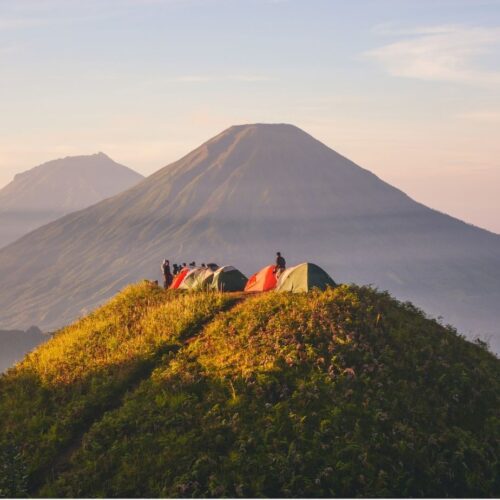
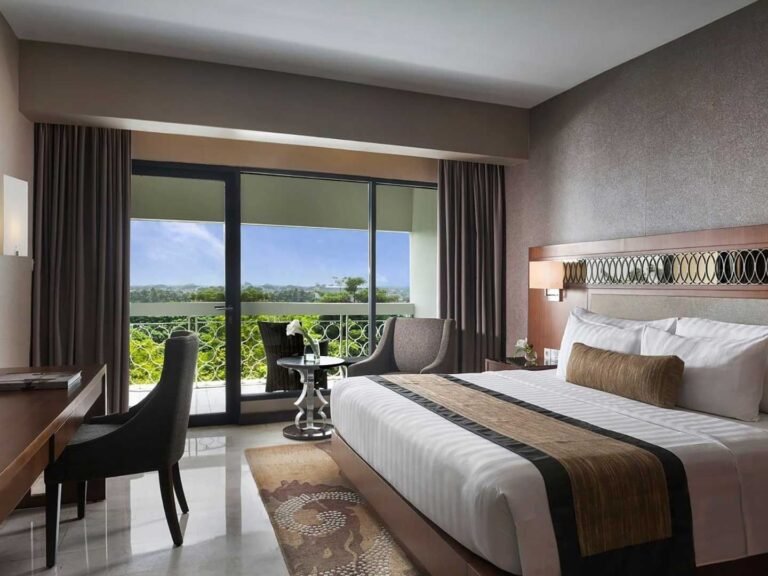
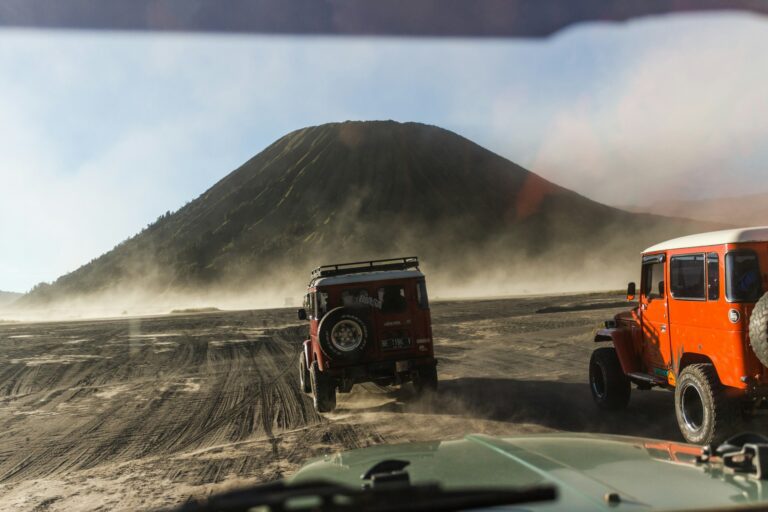
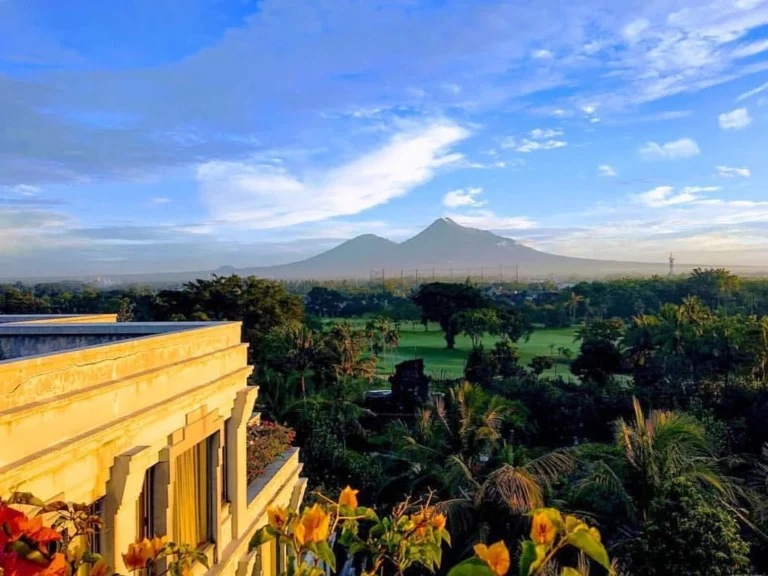
![Traveling from Jakarta to Yogyakarta: Bus, Train, Plane, and Car [Transport Guide] 9 - Goajomblang.com Traveling from Jakarta to Yogyakarta: Bus, Train, Plane, and Car](https://yogyakartatour.com/wp-content/uploads/2024/01/yogyakarta-768x512.jpg)
